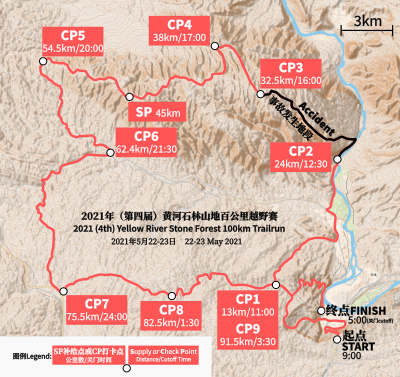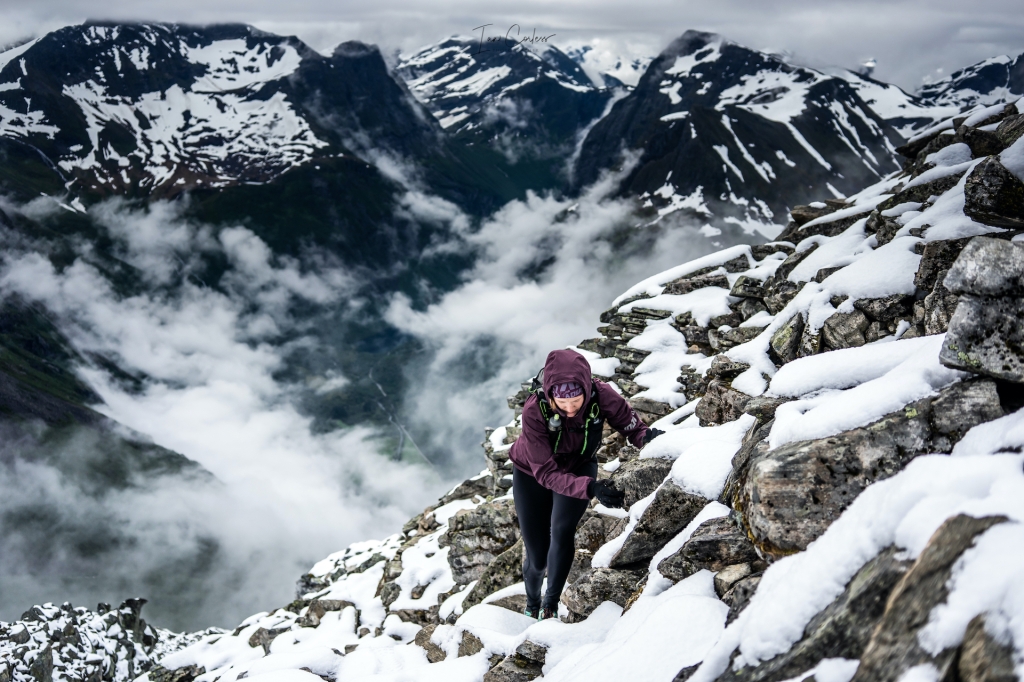
I was notified of the horrific incident in China over breakfast whilst on location in the mountains of Norway.
I immediately typed ‘China’ into a Google search and the headline was everywhere:
“Twenty-one dead as extreme weather hits ultramarathon in China”
The Yellow River Stone Forest 100k, held at Yellow River Stone Forest Park in Gansu Province in northwestern China was organized by the Baiyin Municipal Committee, Sports Bureau, and local branches of the Communist Party of China.
It was clear that a horrific tragedy had occurred and I, like everyone else asked, ‘How could this happen on such a huge scale?’
On the start line 172 participants toed the line, ahead 100km. Reports outlined cool and breezy conditions at the start. But by 1pm in the afternoon, conditions had changed considerably, and the race was hit by freezing rain, gale-force winds and dropping temperatures. With most participants somewhere between 20 and 32km, the weather continued to become more severe, runners were ill prepared and defenseless against the conditions resulting in the death of 21 souls, the main cause hypothermia.
‘The runners were racing along a very narrow mountain path at an altitude of about 2,000-3,000 meters.’
– GT
The race was halted at 2pm after messages were sent out by emergency trackers, cell phones and some runner’s posting on social media. Search and rescue efforts were put in place and somewhere between 700 and 1200 rescuers were called in to action – the exact figures vary depending on which news outlets one uses. Using state-of-the-art technology such as drones, thermal imaging, and radar, 151 runners were eventually confirmed safe despite harsh conditions and delays due to landslides.
There has been much debate, many questions asked, and a great deal of blame fired around on all media platforms. The deaths prompted outrage in China, with many questioning the preparedness of the Baiyin Municipal Committee.
In ultra-running circles, worldwide, Twitter, Facebook and other social outlets had continuing heated debates that pointed blame, questioned mandatory kit and the overall experience level of runners, and organising team. To clarify, Jing Liang was one of the poor souls to lose his life, an experienced athlete who has raced at UTMB and Hong Kong 100, so, not a novice. And the Baiyin Municipal Committee had organized previous editions of the race without problem.
“The tragedy in China has weighed on me heavily. It could have been any of us out there pushing through with the ultrarunner mindset,” said Camille Herron. “Part of being an ultra-runner is being able to trouble shoot.”
The Global Times on May 24th published an article titled Deadly cross-country race exposes hidden yet common safety problems in China’s red-hot marathon pursuit – It was an article that did not hold back.
‘While it’s the hypothermia that directly caused their death, several insiders in China’s marathon business said the organising committee should shoulder the main responsibility for failing to provide enough organisational, tactical, rescue, and security support for the event.’
Global Times
It is only correct questions are asked, and without doubt there is much to learn here, not only by those who organise races but also for those who run them.
As many running friends have commented to me personally, ‘shit happens’ and sometimes you cannot plan for freak occurrences. After all, this is why they are called freak – ‘An incident, especially one that is harmful, occurring under highly unusual and unlikely circumstances.’
However, the required ‘mandatory’ equipment for the Yellow River Stone Forest 100k was at best minimal – cell phone, whistle, water container, headlamp, race bib, GPS tracker, GPX file (I assume on watch or phone) and timing chip.
A jacket, trekking poles, water, energy supplies, first aid, petroleum jelly and Buff were considered ‘recommended’ but not mandatory.

It’s fair to say, that even with the ‘recommended’ items, in the freak weather encountered in China, maybe the outcome would have been no different due to the severity of the storm. However, we will never know the answer to this and at best, we should all use this as a lesson to be better prepared.
Remember though, while we tend to associate danger with cold, wet, wind, altitude, snow and ice, the opposite; heat, humidity and sun can be equally as dangerous and fatal. Take for example, The London Marathon. In 2018 the race was hit with 24-degree temperatures which caused havoc; one runner died after collapsing during the race and 73 were hospitalized. Now for some, 24 degrees may be considered a warm day, however, for many British runners who trained through a UK winter, it was exceptionally hot and something they had not trained for.
While mandatory kit is useful, being specific and training for an event is equally, if not far more important than the equipment you will or not wear. An understanding of the event, the challenges it can bring, and the dangers are all part of the process.
“It is essential to adapt yourself and your equipment to your reality, to test it during training outings in various conditions and to bring everything that will be useful and necessary to you for the race.”
UTMB
The nature of an ultra-running event is to push boundaries, go to the unknown and find a new personal level. Safety, to some extent, is an illusion and to assume that because you have entered something ‘official’ does not mean that you are safe. UTMB sum it up well (and they have a great deal of experience in managing route, runners, and weather):
“Choose clothing that really provides good protection in the mountains against cold, wind and snow, and therefore gives better safety and performance. In the event of an incident, your equipment must also allow you to wait for help in sufficient safety conditions.”
UTMB
The above sums it up for me, and quite simply I would summarize:
- Know the event.
- Understand yourself, your limits, and your expected time on the course.
- What are your strengths and weaknesses?
- Prepare and plan meticulously with training that simulates the event and conditions.
- Don’t compromise.
- Imagine the worst conditions possible and then plan for them to deteriorate even more. Remember, shit can happen!
Make educated decisions about risk.
Learn about the equipment you are using, understand layering.
Act quickly and quite simply, be prepared to turnaround and understand (in advance) what exit routes and speedy options exist.
Physically prepare so that you are in the best position possible to achieve your desired goal – be realistic.
Be mentally prepared for the highs and lows and accept that YOU are ultimately responsible for your own safety.
Understand that yes, one day, you may not return from an adventure… And to clarify, there is no guarantee on what day you will die, it could be tomorrow crossing a road, next week through illness or on the top of the mountain in a race – life is a risk we manage daily.
I personally see mandatory kit implemented to protect runners from themselves. The educated, experienced, and knowledgeable know what to bring, I most certainly do, and I usually carry far more than would be required.
However, racing does change the mindset, particularly at the elite level when every gram of additional weight could be seen as a disadvantage.
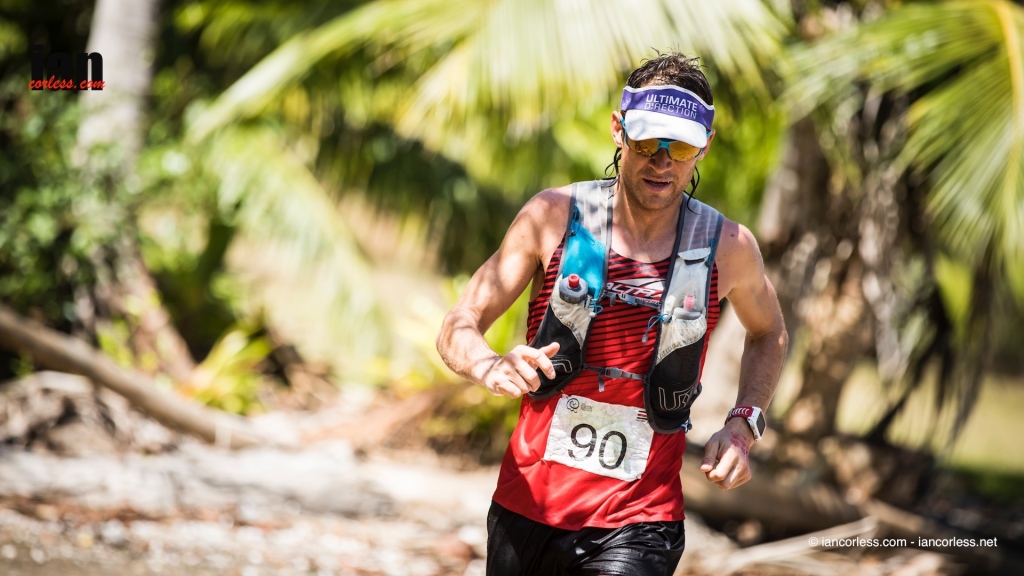
Good friend and elite runner, Jason Schlarb posted on May 24th, ‘This sounds like something that could happen in many, many races or in my own adventures. I know I go as light as I can in races and don’t really prepare to be able to stand around in the cold… it’s a race… I’m embarrassed it took me realizing how this could totally happen to me,’
Choosing the lightest weight clothing possible to gain a few grams is not always the best option, opting for clothing which really offers good protection in the mountains against the cold, wind, and snow, provides better security and ultimately, a better performance.
Therefore, a no compromise approach to mandatory kit levels the playing field and means that every participant should be carrying the same and therefore carrying similar (+/-) additional weight. As UTMB states, ‘All runners must have the mandatory equipment with them at all times or face a penalty.’
In addition, UTMB go one-step further and have options based around kit lists for heatwaves, cold conditions and finally bad weather scenarios. They would implement the necessary list based on weather forecasts pre-race and it is the responsibility of the runner to have all items available.

Standard UTMB kit list:
- Pack destined to transport obligatory equipment throughout the race.
- Mobile/cell phone with international roaming allowing for its use in the three countries (load into its memory the organisation’s security numbers, keep the phone on, don’t mask your number and don’t forget to leave with the battery fully charged)
- Personal beaker 15 cl minimum (bottles or flasks with lids are not accepted)
- Supply of water of 1 liter minimum
- 2 torches in good working order with spare cells/batteries for each torch
- Recommendation: 200 lumens or more for the main torch
- Survival blanket of 1.40m x 2m minimum
- Whistle
- Self-adhesive elasticated bandage which can serve as a bandage or strapping (minimum 100 cm x 6 cm)
- Food reserve, recommendation: 800kcal (2 gels + 2 energizing bars each of 65g)
- Jacket with hood which will withstand bad weather in the mountains and made with a waterproof* and breathable** membrane – the jacket must, imperatively, be fitted with an integrated hood or one which is attached to the jacket by the original system designed for that purpose by the manufacturer – the seams must be sealed – the jacket must not have sections of fabric which are not waterproof, but air vents fitted by the manufacturer (under-arm, in the back), since they do not damage in any obvious way the impermeability, are accepted.
- It is the runner’s responsibility to judge, with these criteria, if their jacket fits the regulations stated and so bad weather in the mountains, but, during a check, the judgment is made by the person in charge of the check or the steward.
- Long-legged trousers or race leggings OR a combination of legging and socks which cover the legs completely
- Cap or bandana or Buff®
- Additional warm second layer: a warm second layer top with long sleeves (cotton excluded) of a weight of a minimum of 180g (men’s size medium (M))
- OR the combination of a warm long-sleeved underwear (first or second layer, cotton exclude) of a minimum weight of 110g (men’s size medium (M)) and a durable water repellant (DWR protection) windproof jacket*
- The wind-proof jacket does not replace the obligatory waterproof jacket, and vice versa
- Hat
- Warm and water-proof gloves
- Waterproof over trousers
- ID – passport/ID card

You may read the above and consider the list to be an overkill. I personally do not. On considerably more than one occasion, I have encountered conditions where the above was completely required. Please don’t cut corners, technically compliant does not always equate to useful.
Read an article on ‘What goes in my Winter Pack.’
Ultra-distance and mountain races are designed to push boundaries, but personal responsibility and self-awareness goes a long way. The above, without a doubt, can help should a situation turn badly, but ultimately, a good understanding of one’s ability is a great place to start. Maybe (?) to stand on certain start lines in the first place is already a bad decision.
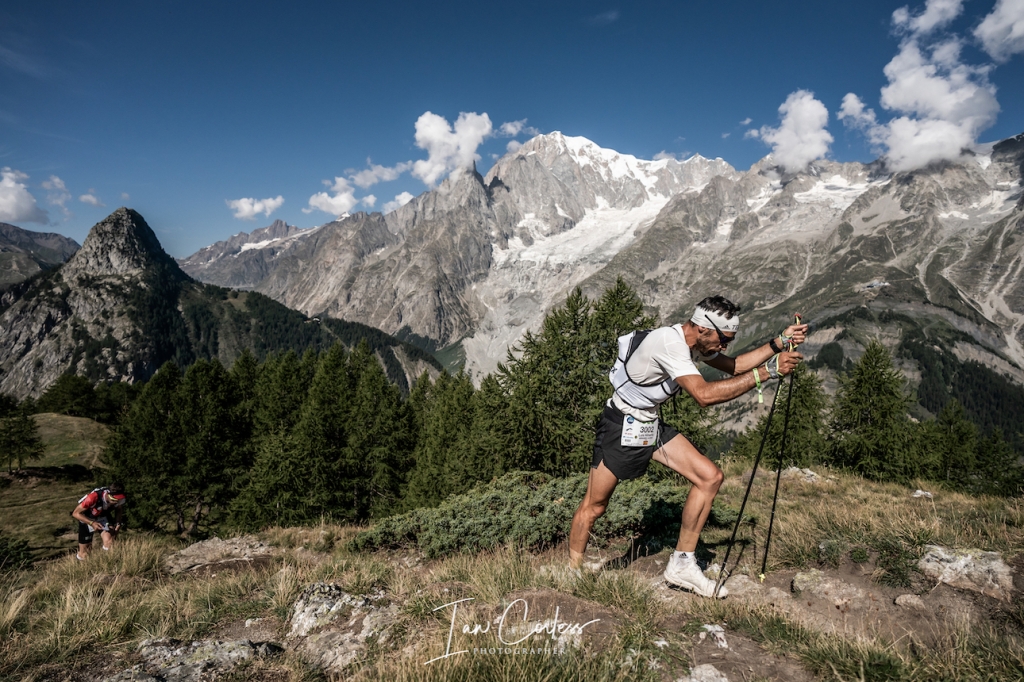
Will Gadd, a prominent Canadian ice climber, paraglider pilot and mountain guide summed his thoughts up so well in a recent article:
‘If we go into the mountains, we are taking a larger-than-daily-life risk. The only way to totally avoid that is to not go… I’ve spent decades in the mountains and have had three serious accidents in my groups in all that time. Pretty good odds, no? But, to my guest who got hit in the arm by a rock while I was guiding her, and to my partner who I dropped a rock on, that record means very little. I also reviewed the avalanche forecasting where, the next day, an amazing woman, who was very close with my family and deeply loved by hers, died. I didn’t’t think any of those outcomes would happen, but they did. I really can’t keep us—you or me—completely safe. That’s my painfully learned truth after thousands of personal and professional days in the mountains. Days sometimes end badly, even with the best practices and motivations.’
The debate will continue and there are no simple answers, but the situation in China should be a learning curve for all and wake-up to a greater understanding for race organizations and runners. Maybe we will see more in-depth mandatory kits imposed on races worldwide? Also, maybe there will be greater vetting so that races can understand if runner has the required experience to participate.
A good friend, Graham Kelly said recently, ‘I am sitting wondering where personal responsibility, vetting and experience sits in the sport we all love. I am at best mid pack these days (more often chasing cut offs). There are races I won’t enter (that I used to enjoy) knowing the burden on race staff/volunteers could be unacceptable in my mind.’
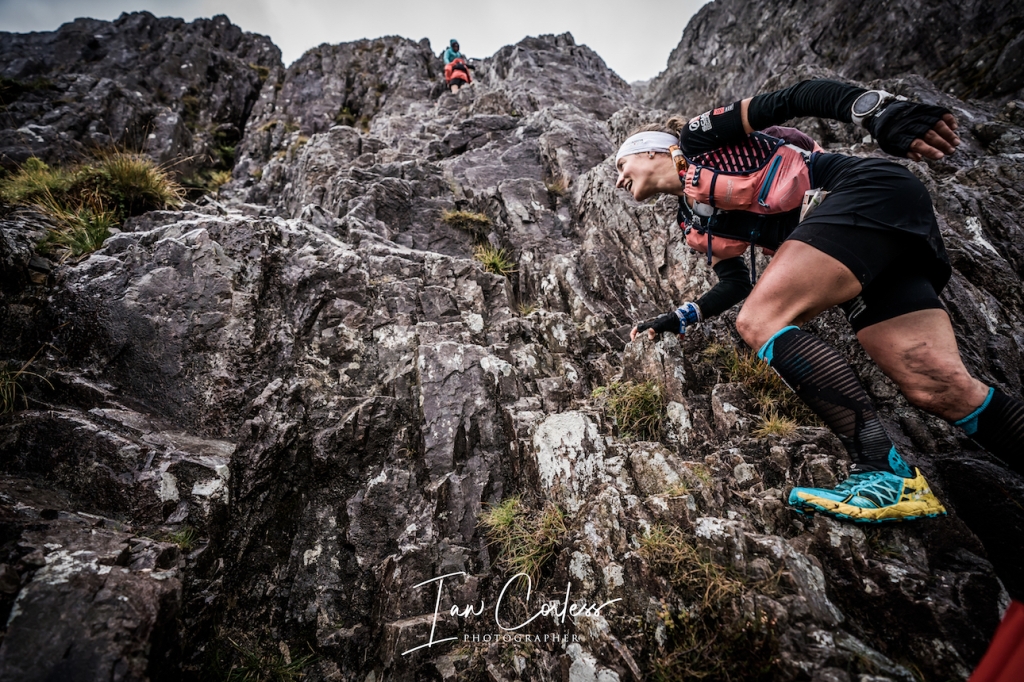
Vetting in races of an extreme nature, such as Glencoe Skyline already happens, ‘The organisers have an obligation to ensure that the Salomon Glen Coe Skyline® is as safe as possible, but without diminishing the nature of the challenge… The nature of the challenge is very severe and there is a risk of serious injury or death whilst participating in this event… Our route features long and sustained sections of scrambling terrain, which is roughly equivalent to ‘moderate standard rock climbing’. Be under no illusions that a slip or trip on these serious sections of the route could result in death.’

In the above scenario, equipment alone is not enough, so educate, understand and asses.
I for one, like to think I am prepared for most scenarios when going out. I constantly adapt my pack and its contents for the planned adventure, terrain, anticipated conditions, and my expected time out. I also know, through bitter experience, whatever I have planned for, I can expect it all to go wrong, and I then add additional items for the ‘freak’ scenario that unfortunately our runner friends experienced at the Yellow River Stone Forest 100k. I am also never worried about turning around and going home, it can be frustrating for sure, but the trails and mountains will be there for another day.
We can try to plan for every scenario, we can educate and anticipate the worst-case scenario so that we increase not only our individual opportunity to return home but maybe those around us.
Ultimately though, shit happens, and when it does, I want to be as prepared as I possibly can be, I hope you do too.
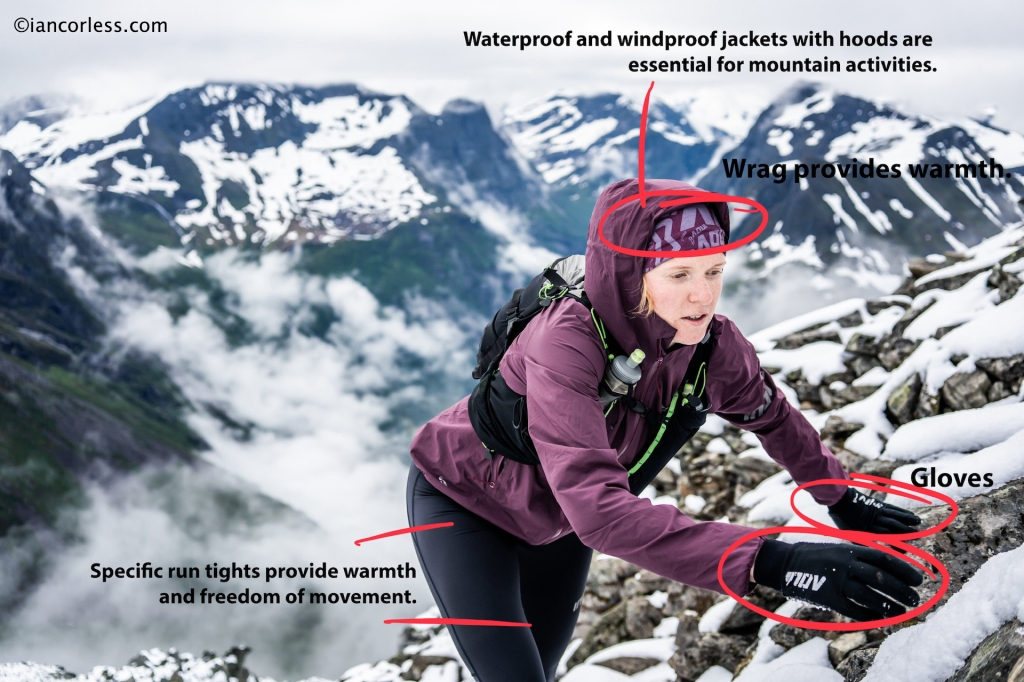
Please support this website. I believe everyone deserves to read quality, independent and factual articles – that’s why this website is open to all. Free press has never been so vital. I hope I can keep providing independent articles with your help. Any contribution, however big or small, is so valuable to help finance regular content. Please support me on Patreon HERE.

Follow on:
Instagram – @iancorlessphotography
Twitter – @talkultra
facebook.com/iancorlessphotography
Web – www.iancorless.com
Web – www.iancorlessphotography.com
Image sales –www.iancorless.photoshelter.com

